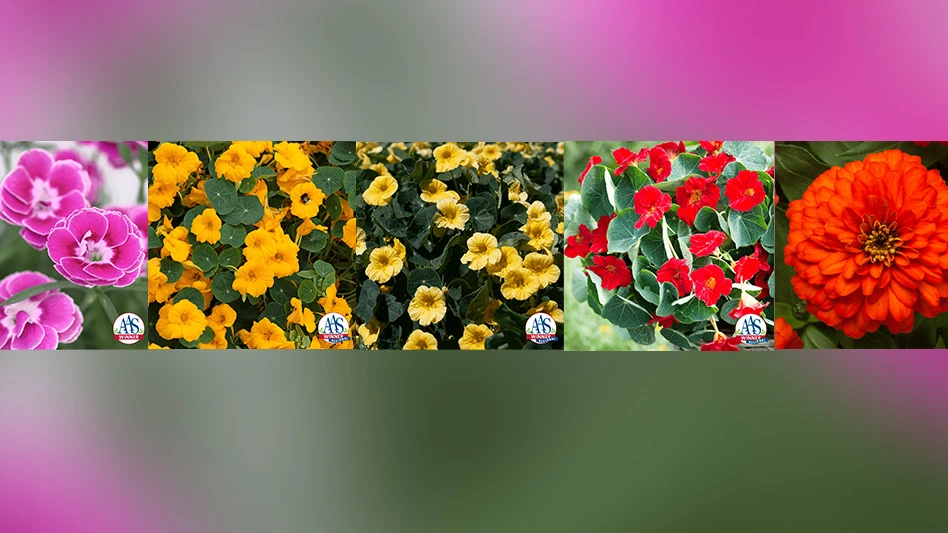
As the lead grower at Hoffman Nursery (Rougemont, North Carolina) – an industry leader and 30-plus year grower of greenhouse ornamental and native grasses (slogan: We Grow Great Grasses!) – Bill Hall knows all-too-well the difficulties that can arise in getting some of the varieties to root prior to shipment.
Hall and his production team typically receive grass varieties in large clumps, which they then break down into smaller plots that they call divisions.
“We’ll pot those divisions into liner pots, and then we’ll typically put them in our houses under our misting systems for about 14 days,” Hall says.
Misting involves lightly applying recycled irrigation water atop of the divisions multiple times throughout the day. The grasses should respond accordingly with vegetative growth increases within about two weeks, according to Hall.
“We should see them start to root in about 10 to 14 days, and typically by day 14 they're off of the mist and they are ready to go,” he adds.
The specific timing around your preferred rooting is another important aspect to consider. If you are hoping to start the production cycle early and overwinter them in cold frames until shipping season hits – which is what Hoffman does – you’ll want to get the cycle going in the late fall or early winter. In that case, you will want these activities to occur inside a heated structure and keep your ambient temperatures above 60° F to encourage root development.
“This time of year, it’s warm enough here in North Carolina that we can do it outside and still have success,” he adds.


Trending varieties, grasses for backup?
Hall confirmed that the rumors this spring are indeed true: greenhouse and nursery operations of all sizes are seeing constrained young plant supplies as we turned the page from early to late-spring.
Many brave prognosticators have forecast that operations will likely be forced to grow something, anything, beyond their usual crop mixes to keep plants available for their customers into mid-to-late-summer. Many thought perhaps ornamental and native grasses would fill the hole left by the expected flower, tree, and shrub shortages.
Not so fast, according to Hall.
“We’re basically sold out across the board right now on everything in our houses,” Hall explains. “That’s across the board for both warm and cold season grasses. We’re just completely sold out.”
The specific ornamental grasses that Hall is seeing increased consumer and landscaper demand on are Carex varieties, which are sedge grasses, and include such notables as Carex Bunny Blue (bit.ly/CarexHobb), Carex Everest (bit.ly/CarexEverest), and Carex ‘Everillo’ (bit.ly/CarexEverillo).
“Unfortunately, the biggest issue right now is the shortage of supply that everyone is encountering on plant material, and that will exist for the grasses as well. Believe me, we know this because we’ve been looking for ourselves, too.”

Explore the July 2021 Issue
Check out more from this issue and find your next story to read.
Latest from Greenhouse Management
- Meet the Next Gen: Gabriella Blair, Star Roses and Plants
- Leading Women of Horticulture: Katie Dubow, Garden Media Group, and Aubry Field, Lizzy Blossom
- Showing up at your horticulture business as your whole self
- Leading women of Greenhouse Management
- USDA fires experts on invasive pests, including Asian citrus psyllid, chilli thrips
- Farwest Show calls for 2025 New Varieties Showcase entries
- Leading Women of Horticulture: Arden Pontasch, North Creek Nurseries
- Leading Women of Horticulture: Emily Showalter, Willoway Nurseries








